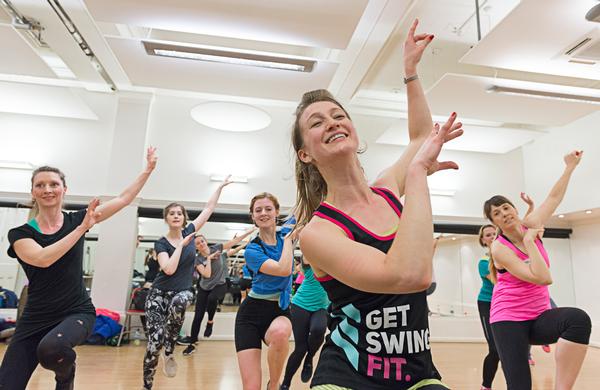



SELECTED
ISSUE
|
|
Leisure Management - All about the beat

Ask an expert

|
|
| All about the beat
|

Music is central to the group exercise experience, but what's its true impact? And how far does specifically engineered music go in terms of increasing participation, motivation, engagement and retention?
Kath Hudson asks the experts
|
|
|
 |

Dr Costas Karageorghis
Reader in sport psychology
Brunel University London
 |
|
Well-selected music can enhance people’s emotional state and, when coupled with the communal feelings of a group exercise class, can facilitate adherence to exercise.
Part of our innate response to music is to rhythm, and research has shown that the synchronisation of movement to music in a controlled environment with a teacher can be hugely pleasurable.
However, interestingly, research shows the behaviour of the instructor can be a more potent influence than music selection.
The optimal music for a class will please the instructor, fall within the musical choices of exercisers and match both the nature and intensity of the activity. If you get these various elements in alignment, then you’re cooking!
If you’re choosing your own music, my advice is to aim to democratise the music selection as much as possible and change the playlist every so often to keep things fresh.
It’s worth bearing in mind that the volume of music is equally as important as the type of music. It shouldn’t be too loud, because the combination of very loud music with high-intensity exercise can damage hearing. During high-intensity exercise, blood drains away from the follicles in the cochlea (the shell-like part of the inner ear), making them more susceptible to damage. Repeated exposure to very loud music can result in tinnitus, which causes ringing in the ears.
We recommend that during the class participants should be able to maintain a conversation with their neighbour, without needing to shout. Another important rule is that when learning a new technique, music should be low, or even turned off altogether, as people generally find it difficult to process music and learn complex motor skills. Listening to background music generally uses up to 10 to 12 per cent of our attention.
"People find it difficult to process music and learn complex motor skills at the same time, so when members are learning a new technique, the music should be low or switched off"
| |


|

Costas Karageorghis works with sports students at Brunel University |
|
|
 |

Steve Tansey,null
Head of R&D
Les Mills UK
 |
|
Music is integral to the Les Mills group exercise experience. We endeavour to provide eclectic motivational music for each of our programmes and produce our own cover music, which is available in many countries license-free. We customise music for some programmes, for example the GRIT series of Plyo, and Strength has music created to fit with changes in intensity.
But music doesn't have to be produced specifically for a workout in order for it to be powerful. If the instructor loves the music, their energy will infect the class. Research shows that during steady state aerobic exercise, motivational music can improve affective states by up to 15 per cent and lower fatigue perception by up to 12 per cent. It also lowers the level of perceived exertion and encourages rhythm.
At Les Mills we believe the class and the music should be changed every three months. Once a class has been taught a new release for two weeks, we encourage the instructor to mix in tracks from previous releases to keep the class engaged. Music for motivation is a personal choice, but participants and instructors rarely vote with their feet from one release to the next. However, if they feel we haven’t provided the right music, they are highly opinionated – and with good reason.
"Research shows that during steady state aerobic exercise, motivational music can improve affective states and lower fatigue perception"
|
|
 |

Jeff Tong
Trainer and choreographer
SwingTrain
 |
|
People light up when they hear swing music, and this was the inspiration for our exercise concept. We use classic swing, gospel and R&B music from the 20s, 30s and 40s, right up to modern-day pop, but it all has a swing feel to it. There are so many great songs out there from the past to the present that it’s an exciting challenge as a choreographer to find existing songs to use and it’s always nice to surprise our students with a vintage workout to a swing song that they know. As a result, we don’t currently feel the need to create our own custom music, but that's not to say never.
As one of the lead choreographers, I choreograph two new songs a month and it’s difficult to find songs that tick all of the boxes, so I listen to a lot of music. It has to have a nice rise, be feel-good and happy, but it also needs to lend itself to the swing moves and have a clear structure – verse, chorus, verse, chorus, middle eight, chorus. There have to be repeating parts, so you can repeat moves, which then activates muscle memory and makes people feel more accomplished.
The overall soundtrack has to fit the shape of the class, providing a balance between high and low intensity, with some power tracks to do the hard work and some quiet points for recovery. The class starts with a couple of warm-up tracks with simple and easy-to-learn choreography, moves into two medium-to-high intensity tracks, then a slower one to recover, followed by a high intensity track, so they can push themselves hard before the break. After this there are three power tracks, back to back, before cooling down and stretching. Even the stretching track has a sassy beat – something like Minnie the Moocher.
"There must be repeating parts in the song, so you can repeat moves, which then activates muscle memory and makes people feel more accomplished"
| |


|
| PHOTO: MARK WHEELER |

SwingTrain classes are set to swing music from the 20s to today |
|
|
 |

Dave Sibley
Managing director
STRONG by Zumba Europe, Russia and India
 |
|
Rather than sourcing music that matches the moves, for STRONG by Zumba we create our own music to complement the workout.
Sound effects that match specific moves have been added to the basic track – for example a specific drum sound accompanying a punch. This helps participants identify the move required, eventually doing so without thinking, so they start to feel more accomplished, which further increases their motivation.
Added to this, the track speed has to be right for the moves it’s accompanying – for STRONG by Zumba, we need a challenging, but achievable, pace. The structure must have repetitive elements so that participants can repeat moves to the same musical phrases – something that starts to happen with less thought as the participant becomes more familiar with the music. And finally, the music needs great, engaging and uplifting hooks.
STRONG by Zumba participants are initially attracted by the style of music. The class is a high-energy experience and so the music is upbeat, uplifting and intense. Providing the participant is expecting this sort of workout, the music is universally well received. It’s aimed at an audience with a good level of fitness and the music has been designed to enable them to push themselves.
Soundtracks need to provide a balance between familiarity and refreshment. Familiarity allows the participant to focus on performing with maximum effort and the best form, and gain satisfaction from improving. However, there needs to be the challenge of new tracks and moves so our policy is to provide new music for 25 per cent of a one-hour class each month.
"We create our own music to complement the workout, with sound effects that match specific moves"
| |


|

Instructors receive new music
for their soundtrack every month |
|
|
 |
| Originally published in Health Club Management 2018 issue 4
|
|
 |
|
